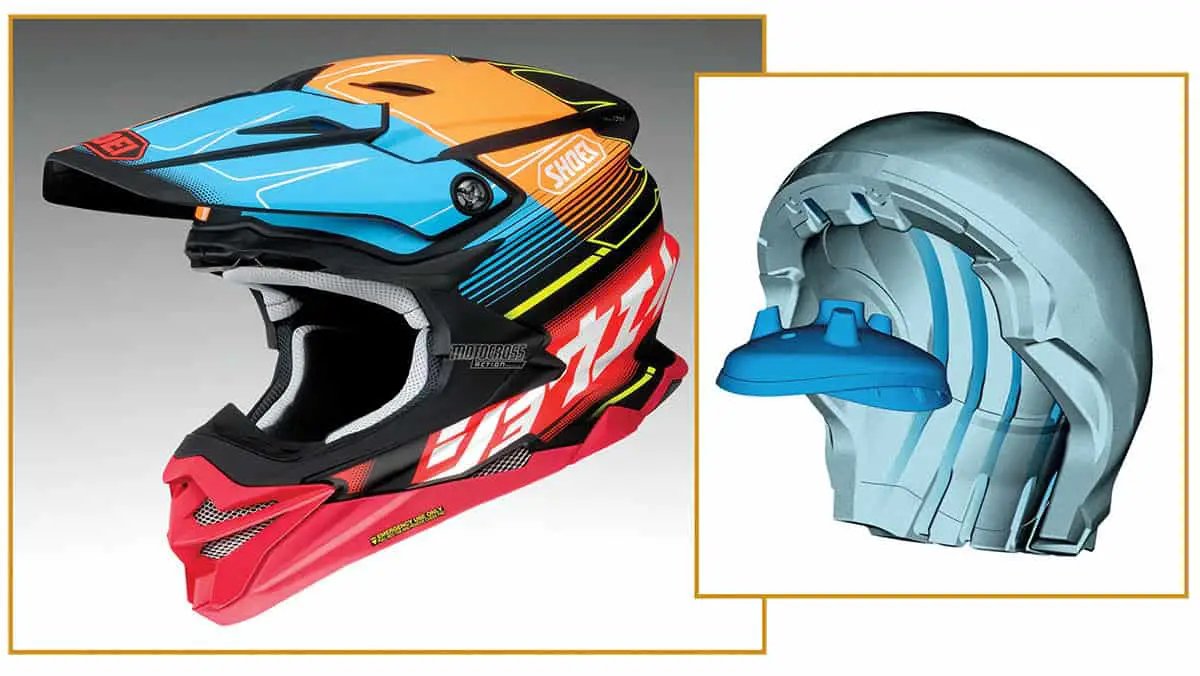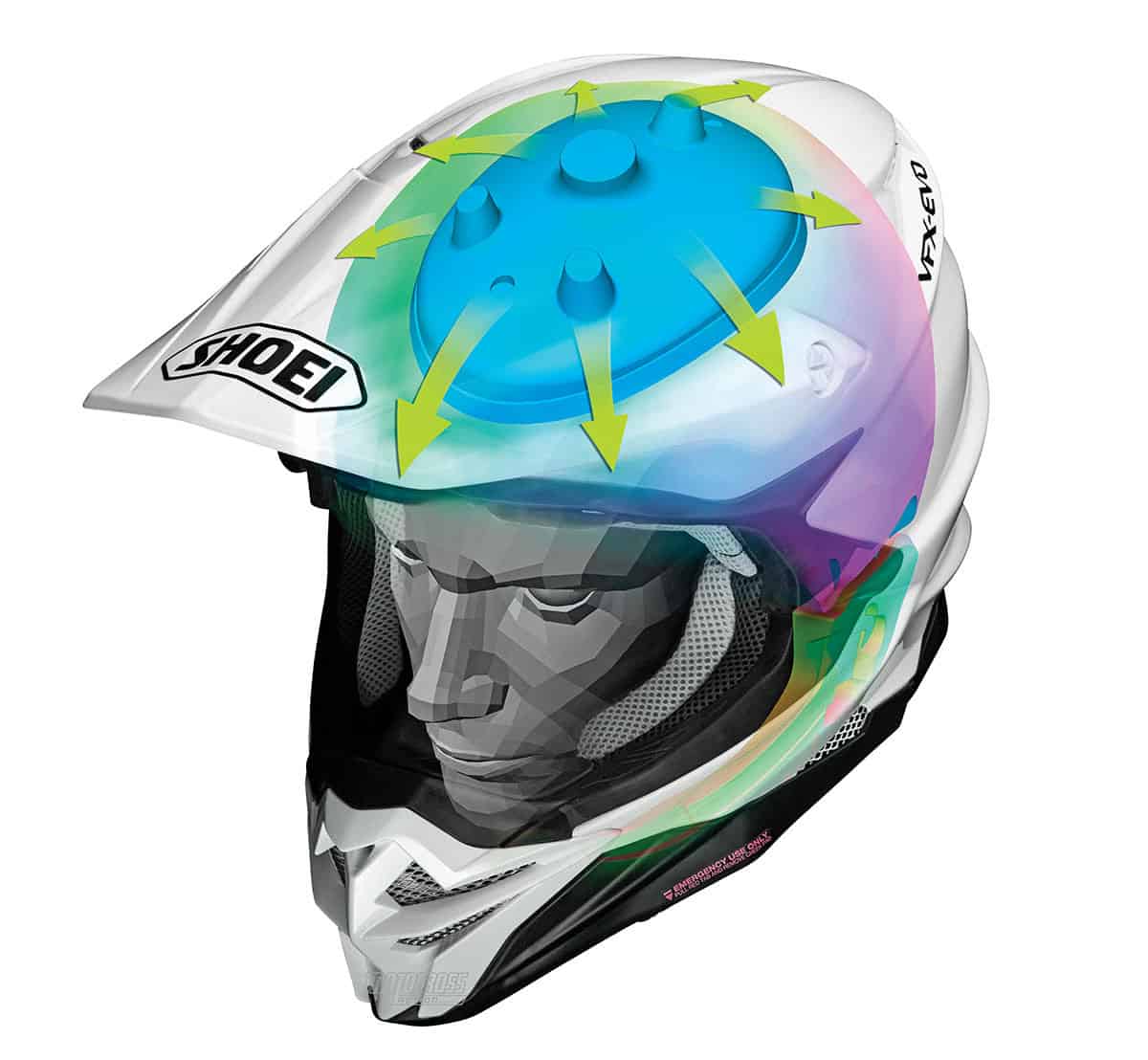MXA TEAM TESTED: SHOEI VFX-EVO HELMET
 WHAT IS IT? We’ve waited a long time for Shoei’s VFX-EVO helmet to be introduced. Its predecessor, the VFX-W, was at the forefront of helmet technology 10 years ago. Over that decade the helmet landscape has changed dramatically, thanks to the introduction of new technologies, creative design and a new focus on safety features. Shoei has stepped up with the VFX-EVO.
WHAT IS IT? We’ve waited a long time for Shoei’s VFX-EVO helmet to be introduced. Its predecessor, the VFX-W, was at the forefront of helmet technology 10 years ago. Over that decade the helmet landscape has changed dramatically, thanks to the introduction of new technologies, creative design and a new focus on safety features. Shoei has stepped up with the VFX-EVO.
WHAT’S IT COST? $539.00 to $559.00 (solid colors), $719.00 to $739.00 (graphics designs)
CONTACT? www.shoei-helmets.com or your local dealer.
WHAT STANDS OUT? Here’s a list of things that stand out with Shoei’s VFX-EVO helmet.
(1) Foam. Shoei uses a dual-density EPS liner. It is softer at the helmet’s crown and firmer on the sides. The placement and use of the different foam densities are determined by the surface area, contact patch size and predicted force of the impact in each area.
(2) Fit. We tested the previous VFX-W side by side with the new VFX-EVO. The sizing on the VFX-EVO was tighter in the cheek area. We asked Shoei about the chipmunk feel, thinking that we might have to go up a size. Shoei told us to ride in it for a while and it would break in. If not, they said thinner cheek pads were available. The helmet took a few more rides to break in than we thought, but it did come around for most MXA test riders. Some, however, did change to the thinner cheek pads.
(3) M.E.D.S. Shoei’s new rotational energy mitigation system is called M.E.D.S. (Motion Energy Distribution System). M.E.D.S. consists of an anchored center column that the dual-layer system swings from during an impact event (crash). This allows the three strategically designed perimeter columns to absorb the energy and lessen the rotational impact. The great thing about the M.E.D.S. system is that our testers couldn’t tell it was in the helmet.
(4) Weight. You would think the additional foam structures would cause the VFX-EVO to gain weight. Not so. On MXA’s scale, the old VFX-W and the new VFX-EVO both weighed 3.3 pounds compared to the 6D at 3.4 and the Troy Lee Designs SE4 at 2.9 pounds.
(5) Function. The 16 intake and exhaust vents make this one of the best-ventilated helmets on the market. It also makes it one of the loudest. The VFX-EVO is so much louder than its VFX-W predecessor that some die-hard Shoei loyalists started using earplugs. The comfort of the helmet is great. We also like the flexibility of the visor, as well as the large eyeport. Even the largest goggle frames fit without issue.
(6) Looks. MXA test riders liked the sharp look. It has a swoopy and chiseled design that looks fast sitting still. However, every test rider was wary of the implication of catching one of its pronounced ridges in the dirt when crashing.
WHAT’S THE SQUAWK? Three quibbles. (1) You have chipmunk cheeks until the helmet is broke in. (2) The increased ventilation makes the helmet noisy. (3) Maybe it’s just us, but we’d prefer a more rounded shape with less angles, ridges and winglets.
MXA RATING: The VFX-EVO brings back the warm fussy feelings that many test riders had for Shoei helmets back in the VFX-W days. It doesn’t look a whole lot different on the outside, but we appauld the added safety features on the inside. And safety is what counts in a helmet.







Comments are closed.